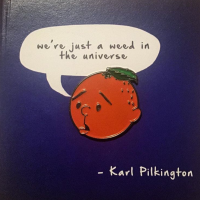MLB 2025 Off season
Comments
-
can't see the mets coming back with the way KC is playing but stranger things have happened.
AA out in Toronto. That's great0 -
Winning four out of five is really tough but I could still see the Mets doing it. I fully expect them to take game 3 and get some momentum back.Cliffy6745 said:can't see the mets coming back with the way KC is playing but stranger things have happened.
AA out in Toronto. That's greatsevered hand thirteen2006: Gorge 7/23 2008: Hartford 6/27 Beacon 7/1 2009: Spectrum 10/30-31
2010: Newark 5/18 MSG 5/20-21 2011: PJ20 9/3-4 2012: Made In America 9/2
2013: Brooklyn 10/18-19 Philly 10/21-22 Hartford 10/25 2014: ACL10/12
2015: NYC 9/23 2016: Tampa 4/11 Philly 4/28-29 MSG 5/1-2 Fenway 8/5+8/7
2017: RRHoF 4/7 2018: Fenway 9/2+9/4 2021: Sea Hear Now 9/18
2022: MSG 9/11 2024: MSG 9/3-4 Philly 9/7+9/9 Fenway 9/15+9/17
2025: Pittsburgh 5/16+5/180 -
mets shoulda had Game 1.....cespedes non catch and familia blown save.If I had known then what I know now...
Vegas 93, Vegas 98, Vegas 00 (10 year show), Vegas 03, Vegas 06
VIC 07
EV LA1 08
Seattle1 09, Seattle2 09, Salt Lake 09, LA4 09
Columbus 10
EV LA 11
Vancouver 11
Missoula 12
Portland 13, Spokane 13
St. Paul 14, Denver 14Philly I & II, 16Denver 22
Missoula 240 -
mattingly.....EIGHTH Marlins manager since 2010

plus, they fired the GM today. nothing like stability.If I had known then what I know now...
Vegas 93, Vegas 98, Vegas 00 (10 year show), Vegas 03, Vegas 06
VIC 07
EV LA1 08
Seattle1 09, Seattle2 09, Salt Lake 09, LA4 09
Columbus 10
EV LA 11
Vancouver 11
Missoula 12
Portland 13, Spokane 13
St. Paul 14, Denver 14Philly I & II, 16Denver 22
Missoula 240 -
To think they are the only team that's never lost a playoff series.imalive said:mattingly.....EIGHTH Marlins manager since 2010

plus, they fired the GM today. nothing like stability.
Star Lake 00 / Pittsburgh 03 / State College 03 / Bristow 03 / Cleveland 06 / Camden II 06 / DC 08 / Pittsburgh 13 / Baltimore 13 / Charlottesville 13 / Cincinnati 14 / St. Paul 14 / Hampton 16 / Wrigley I 16 / Wrigley II 16 / Baltimore 20 / Camden 22 / Baltimore 24 / Raleigh I 25 / Raleigh II 25 / Pittsburgh I 250 -
Wow, I never realized that.HesCalledDyer said:
To think they are the only team that's never lost a playoff series.imalive said:mattingly.....EIGHTH Marlins manager since 2010

plus, they fired the GM today. nothing like stability.
Mets are winning tonight, right? Come on, we at least need a series.severed hand thirteen2006: Gorge 7/23 2008: Hartford 6/27 Beacon 7/1 2009: Spectrum 10/30-31
2010: Newark 5/18 MSG 5/20-21 2011: PJ20 9/3-4 2012: Made In America 9/2
2013: Brooklyn 10/18-19 Philly 10/21-22 Hartford 10/25 2014: ACL10/12
2015: NYC 9/23 2016: Tampa 4/11 Philly 4/28-29 MSG 5/1-2 Fenway 8/5+8/7
2017: RRHoF 4/7 2018: Fenway 9/2+9/4 2021: Sea Hear Now 9/18
2022: MSG 9/11 2024: MSG 9/3-4 Philly 9/7+9/9 Fenway 9/15+9/17
2025: Pittsburgh 5/16+5/180 -
I think the Mets will be back with a vengeance. I don't know about them taking the series but as somebody else said, stranger things have happened.SVRDhand13 said:Mets are winning tonight, right? Come on, we at least need a series.
"The stars are all connected to the brain."0 -
Winning 4 of 5 is no easy feat, especially when the other team only needs 2 more. That said, the '86 Mets were down 2-0 and did just that.Star Lake 00 / Pittsburgh 03 / State College 03 / Bristow 03 / Cleveland 06 / Camden II 06 / DC 08 / Pittsburgh 13 / Baltimore 13 / Charlottesville 13 / Cincinnati 14 / St. Paul 14 / Hampton 16 / Wrigley I 16 / Wrigley II 16 / Baltimore 20 / Camden 22 / Baltimore 24 / Raleigh I 25 / Raleigh II 25 / Pittsburgh I 250
-
Holy shit. Someone finally sang the anthem like it is supposed to be0
-
Don't think KC had a shot at winning last night's game, Ventura isn't their best pitcher and the Mets had THor pitching. Hopefully KC bounces back.8/28/98- Camden, NJ
10/31/09- Philly
5/21/10- NYC
9/2/12- Philly, PA
7/19/13- Wrigley
10/19/13- Brooklyn, NY
10/21/13- Philly, PA
10/22/13- Philly, PA
10/27/13- Baltimore, MD
4/28/16- Philly, PA
4/29/16- Philly, PA
5/1/16- NYC
5/2/16- NYC
9/2/18- Boston, MA
9/4/18- Boston, MA
9/14/22- Camden, NJ
9/7/24- Philly, PA
9/9/24- Philly, PATres Mts.- 3/23/11- Philly. PA
Eddie Vedder- 6/25/11- Philly, PA
RNDM- 3/9/16- Philly, PA0 -
All the Royals players are crying about Syndergard going high and inside on the first pitch of the game. Funny to hear them say that when they have that piece of trash Ventura who throws at guys on the regular. Fuck the Royals. Let's go Mets!0
-
Anyone else notice the idiot holding up a sign for Ted Cruz? :nuh_uh:"The stars are all connected to the brain."0
-
They have to win tonight ..jesus greets me looks just like me ....0
-
Arod said before game 1 "if the mets catch the ball, they'll be world champions"
Defense has been their issue0 -
Love reading all your comments. Seriously. No sports phonies here!www.cluthelee.com0
-
Nice bounce, Royals.eeriepadave said:Hopefully KC bounces back.
"The stars are all connected to the brain."0 -
yeah kinda surprised, i was at a bar watching it (and the Temple/Notre Dame game). nice comeback win again. Mets kinda shot themselves in the foot with errorsWho Princess said:8/28/98- Camden, NJ
10/31/09- Philly
5/21/10- NYC
9/2/12- Philly, PA
7/19/13- Wrigley
10/19/13- Brooklyn, NY
10/21/13- Philly, PA
10/22/13- Philly, PA
10/27/13- Baltimore, MD
4/28/16- Philly, PA
4/29/16- Philly, PA
5/1/16- NYC
5/2/16- NYC
9/2/18- Boston, MA
9/4/18- Boston, MA
9/14/22- Camden, NJ
9/7/24- Philly, PA
9/9/24- Philly, PATres Mts.- 3/23/11- Philly. PA
Eddie Vedder- 6/25/11- Philly, PA
RNDM- 3/9/16- Philly, PA0 -
some day the mets will learn how to field those easy grounders in the world series
 0
0 -
I can laugh until I think about the Rangers against Toronto.norm said:some day the mets will learn how to field those easy grounders in the world series

Yo, Andrus, wtf?"The stars are all connected to the brain."0 -
wouldn't actually mind seeing the Mets win tonight so KC can win it at home.8/28/98- Camden, NJ
10/31/09- Philly
5/21/10- NYC
9/2/12- Philly, PA
7/19/13- Wrigley
10/19/13- Brooklyn, NY
10/21/13- Philly, PA
10/22/13- Philly, PA
10/27/13- Baltimore, MD
4/28/16- Philly, PA
4/29/16- Philly, PA
5/1/16- NYC
5/2/16- NYC
9/2/18- Boston, MA
9/4/18- Boston, MA
9/14/22- Camden, NJ
9/7/24- Philly, PA
9/9/24- Philly, PATres Mts.- 3/23/11- Philly. PA
Eddie Vedder- 6/25/11- Philly, PA
RNDM- 3/9/16- Philly, PA0
Categories
- All Categories
- 149K Pearl Jam's Music and Activism
- 110.2K The Porch
- 282 Vitalogy
- 35.1K Given To Fly (live)
- 3.5K Words and Music...Communication
- 39.3K Flea Market
- 39.3K Lost Dogs
- 58.7K Not Pearl Jam's Music
- 10.6K Musicians and Gearheads
- 29.1K Other Music
- 17.8K Poetry, Prose, Music & Art
- 1.1K The Art Wall
- 56.8K Non-Pearl Jam Discussion
- 22.2K A Moving Train
- 31.7K All Encompassing Trip
- 2.9K Technical Stuff and Help







